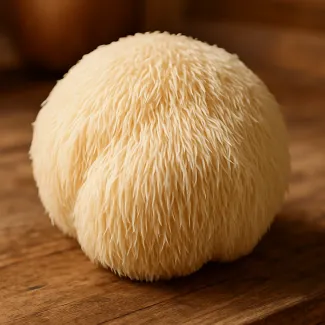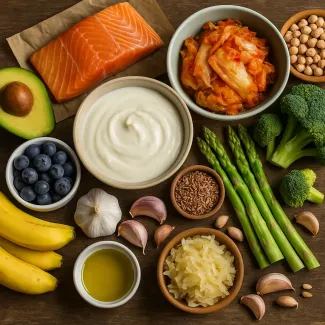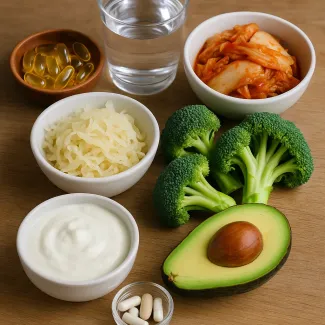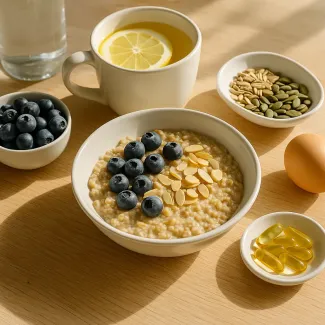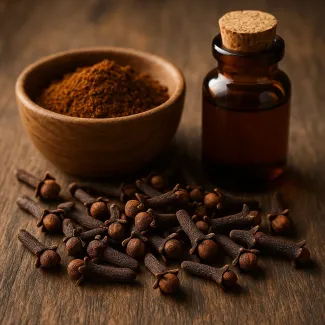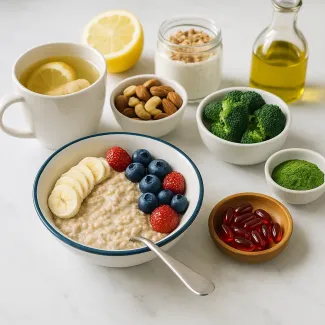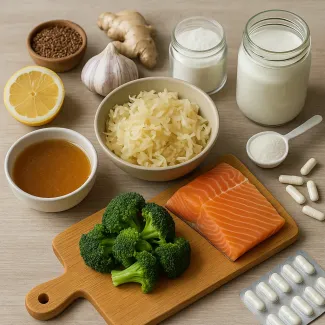
Reset Your Digestive Health Naturally with a Science-Based 4‑Week Gut Reboot
A practical, easy-to-follow guide to repair your gut lining and restore a healthy microbiome balance
Why gut health matters more than ever
In recent years, there’s been a growing awareness of how gut health affects nearly every aspect of well-being — from mental clarity and immune resilience to skin quality, energy levels, and even hormonal balance. The gut microbiome is a delicate ecosystem of trillions of microorganisms that live primarily in the large intestine. Alongside the intestinal lining, this system regulates digestion, supports nutrient absorption, and defends against pathogens.
Unfortunately, modern lifestyles disrupt this balance. Poor diet, chronic stress, sleep deprivation, antibiotic overuse, and environmental toxins contribute to dysbiosis — a microbial imbalance that can lead to leaky gut, bloating, brain fog, food sensitivities, and inflammatory issues.
The good news? You can actively support your gut’s regeneration with a targeted 4-week plan grounded in the latest nutritional science, microbiome research, and lifestyle medicine.
Week 1: Calm inflammation and support gut lining integrity
Focus: Reset and reduce triggers
The first week is about calming inflammation and removing known gut disruptors. Begin by eliminating common irritants such as:
- Refined sugars
- Ultra-processed foods
- Industrial seed oils (e.g., soybean, corn, sunflower)
- Excess alcohol
- Artificial sweeteners
- NSAIDs (non-steroidal anti-inflammatory drugs), unless prescribed
At the same time, start introducing anti-inflammatory foods and habits:
Key additions:
- Bone broth: rich in collagen, glycine, and glutamine, all of which help repair the intestinal barrier
- Steamed vegetables: gentle on digestion, high in fiber and phytonutrients
- Wild fatty fish (like salmon, sardines): high in omega-3s, which reduce intestinal inflammation
- Fermented vegetables: small servings of sauerkraut, kimchi, or pickles to slowly reintroduce probiotics
Lifestyle reset:
- Prioritize 8 hours of sleep to activate cellular repair
- Practice daily breathwork or meditation (5–10 minutes)
- Light exercise like walking to stimulate bowel movement
Avoid raw foods during this stage as they can be harsh on an inflamed gut.
Week 2: Reintroduce and repopulate with prebiotics and probiotics
Focus: Cultivate microbial diversity
With inflammation decreasing, week two focuses on feeding beneficial bacteria and restoring gut flora. This is where diversity of plant foods plays a critical role.
Prebiotic-rich foods to include:
- Garlic, onions, leeks, asparagus, bananas (green), Jerusalem artichokes, dandelion greens
- Whole oats and barley (gluten-free if sensitive)
- Apples, berries, kiwis, pomegranate — rich in polyphenols and soluble fiber
Add natural probiotic sources:
- Unsweetened yogurt with live cultures
- Kefir (dairy or coconut-based)
- Tempeh and natto for vegan-friendly probiotics
- Lacto-fermented vegetables
Supplements (if needed):
- A broad-spectrum probiotic with at least 10 strains and 5–20 billion CFU
- Digestive enzymes to reduce bloating and support absorption
Continue avoiding sugar, alcohol, and processed snacks to allow healthy strains to flourish.
Week 3: Restore digestion, enzyme flow, and bile support
Focus: Enhance nutrient absorption and gut resilience
By now, the gut lining is stronger, inflammation is lower, and microbial diversity is improving. Week three introduces support for digestion, including stomach acid, bile production, and pancreatic enzymes.
Supportive foods:
- Lemon water or apple cider vinegar before meals to stimulate stomach acid
- Bitter greens: arugula, dandelion, endive, radicchio
- Beets, artichokes, and cucumbers to support bile flow
- Ginger and turmeric to enhance enzyme activity and soothe gut muscles
Key practices:
- Chew thoroughly: aim for 20–30 chews per bite
- Eat without distractions to engage the parasympathetic (“rest and digest”) state
- Don’t drink large amounts of water with meals — this can dilute stomach acid
If you experience constipation, support motility with magnesium citrate, hydration, and light movement like yoga twists.
Week 4: Seal the gut lining and build long-term gut immunity
Focus: Strengthen the gut-immune barrier
In the final week, focus shifts to sealing the epithelial lining and maintaining long-term balance in the gut-associated lymphoid tissue (GALT).
Additions to consider:
- L-glutamine: an amino acid that is fuel for enterocytes (gut lining cells)
- Zinc carnosine: shown to support gut repair
- Marshmallow root and slippery elm: mucilaginous herbs that coat and protect
- Vitamin A-rich foods: liver, egg yolks, carrots, sweet potato — essential for mucosal immunity
Continue:
- Eating 25–35 g of fiber daily from various sources
- Including fermented foods and prebiotic-rich meals
- Managing daily stress with short breaks, journaling, and walking in nature
- Drinking filtered water — gut microbes are sensitive to chlorine
This is also the time to evaluate food sensitivities and slowly reintroduce items like gluten, dairy, or eggs one at a time while tracking symptoms.
Additional supportive strategies for gut healing
How to enhance results with smart choices
1. Prioritize gut-friendly cooking techniques
Use steaming, slow cooking, and fermenting. These methods are easier on digestion and retain more nutrients.
2. Choose clean, whole ingredients
Buy organic when possible, avoid pesticide-heavy produce (check the EWG Dirty Dozen), and cook at home to reduce additives.
3. Limit irritants long term
Even after the 4 weeks, try to avoid artificial sweeteners, processed oils, and refined carbs to prevent re-inflammation.
4. Monitor bowel movements
Healthy gut function reflects in regular, well-formed, odor-free stools. Constipation, bloating, or loose stools are signs to adjust fiber, hydration, or food triggers.
Signs your gut is healing
What to look for week by week
- More consistent energy and fewer energy crashes
- Improved mood and less anxiety or irritability
- Better focus and clearer thinking
- Reduced bloating, gas, and abdominal discomfort
- More regular digestion and healthy stools
- Fewer sugar cravings
- More resilient immune responses
Best foods to include for gut lining support
The gut-repair food list
- Bone broth
- Cabbage juice
- Collagen peptides
- L-glutamine powder
- Cooked cruciferous vegetables (broccoli, kale, cauliflower)
- Zinc-rich foods (pumpkin seeds, shellfish, chickpeas)
- High-fiber fruits (apples, pears, berries)
- Chia seeds and flaxseeds
- Pumpkin and squash
- Fermented vegetables
- Ginger and turmeric teas
Common mistakes that slow gut recovery
What to avoid for optimal progress
- Eating too quickly or while stressed
- Skipping meals or long intermittent fasting during repair phase
- Overdoing raw foods early in the protocol
- Taking too many supplements at once
- Using high-dose probiotics without a clear need
- Ignoring sleep and stress as part of healing
- Reintroducing irritants too soon
Supplements that can aid the 4‑week gut plan
Use strategically and only if needed
- Probiotics (broad-spectrum, multi-strain)
- L-glutamine (5–10 g/day)
- Zinc carnosine
- Digestive enzymes
- Collagen peptides
- Magnesium citrate
- Turmeric extract (curcumin)
- Herbal gut soothers (slippery elm, marshmallow root)
Always consult a qualified health provider when adding new supplements, especially if on medications.
Tailored tips for different needs
Gut healing for busy professionals
- Batch cook soups with gut-healing ingredients
- Carry probiotics or sauerkraut juice shots on the go
- Use bone broth powders or collagen sachets at work
For those with autoimmunity or chronic inflammation
- Stay on the elimination phase longer (2–3 extra weeks)
- Avoid gluten, dairy, and nightshades longer term
- Add omega-3 supplements and vitamin D
For women in perimenopause
- Focus on estrogen-balancing fiber: flaxseeds, lentils, leafy greens
- Include magnesium-rich foods to ease stress and improve motility
- Monitor the gut-hormone axis for signs like mood shifts, fatigue, or hot flashes
Long-term maintenance beyond the 4 weeks
Keeping your microbiome in balance daily
- Eat 30+ different plant foods per week
- Keep fermented foods in your weekly rotation
- Continue stress management rituals
- Use digestive bitters before meals
- Move your body daily — walking, stretching, yoga
- Drink plenty of filtered water
- Check in with your body regularly and adjust as needed based on signs
Recipes to support your gut-healing journey
Easy options to incorporate each week
- Morning gut elixir: warm water with lemon, ginger, and collagen
- Lunchtime gut bowl: quinoa, steamed greens, olive oil, sauerkraut, salmon
- Evening broth: bone broth with turmeric, garlic, and miso
- Gut smoothie: banana (green), kefir, flax, berries, cinnamon, spinach
- Anti-inflammatory tea: fennel, licorice root, and chamomile
These functional recipes can help sustain the gut environment long term and reduce relapse into dysbiosis.
